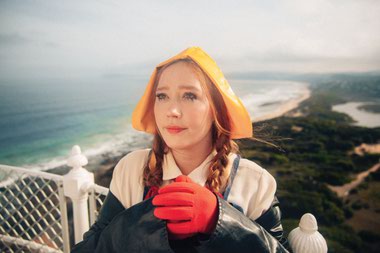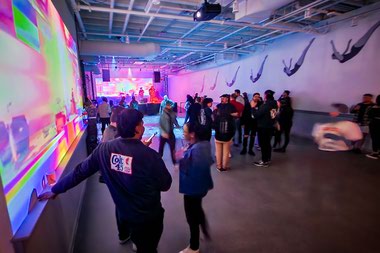When FYF organizers canceled the LA festival’s July edition—with no promise of a 2019 return—I groaned. Not because I’d planned to go this year; I last attended in 2013 and haven’t been seriously tempted to make the pilgrimage since. No, I feared the loss of FYF one state over would put an end to the choice shows that typically spill over to Southern Nevada.
Sure enough, The Breeders—originally scheduled to play Brooklyn Bowl on July 20—rerouted their tour after FYF broke apart (though they’ll play the Vegas venue on September 28). But two other scheduled FYF participants—along with another affiliated act—made good on their plans to play Las Vegas, so in celebration, I did something I rarely attempt anymore: I attended three shows on three consecutive nights.
It began with Quicksand at Brooklyn Bowl on Saturday. The NYC post-hardcore outfit wasn’t on the FYF bill but has been co-headlining a tour with FYF band Glassjaw, so I feared Quicksand wouldn’t wind up making its way to Vegas. When Glassjaw booked another LA gig in place of FYF, however, Quicksand kept its schedule intact … not that many Las Vegans took notice.
The ’90s trio, which reunited in 2012 and released its first album in 22 years in 2017, drew a crowd under 300 to the 2,400-capacity Linq venue. Fortunately for those who did show—a fair swath of whom sang the words to most of the night’s music—the band didn’t seem put off by the turnout. Singer/guitarist Walter Schreifels grinned and bounced around the stage as he, bassist Sergio Vega (who doubles as a Deftones member) and drummer Alan Cage dug into their three studio albums for choice cuts old (“Head to Wall,” “Freezing Process,” “Delusional”) and new. It was an urgent, energetic performance … that would have fit better in Downtown’s 250-cap Bunkhouse Saloon.
That’s where the next two nights found me, starting with Sunday’s Car Seat Headrest show. Will Toledo’s articulate indie rock outfit probably could have played a larger room, having sold out the Bunkhouse months ago, though some of those tickets must have gone unused, judging by the space to the sides of the main throng of bodies.
Supplemented not only by his three regular Car Seat bandmates but also by all three members of opening act Naked Giants, Toledo led his guitars-and-drums phalanx through a pulsating opening cover of 2018 Death Grips song “Black Paint,” setting the tone for the intense set to come. Over a succession of tunes from most recent albums Teens of Denial (“Destroyed by Hippie Powers,” “Drunk Drivers/Killer Whales”) and Twin Fantasy (Face to Face) (“Bodys,” “Cute Thing”)—along with a chunk of Neil Young’s classic “Powerderfinger”—the seven musicians played as one mesmerizingly tight unit, piling up sonic layers to complement, without overshadowing, each number’s central thrust.
Car Seat played just one encore, but it was the 13-minute “Beach Life-in-Death,” which, like many of Toledo’s best creations, tells its story over a series of linked movements. Superb stuff, all the way around.
One night later, the scene onstage could hardly have been much different. In place of seven musicians, drums, amps and various other gear stood one person—Dan Bejar—holding an acoustic guitar with a drink in a plastic cup at his feet. Typical Destroyer shows have the Vancouver singer-songwriter leading a full band, but Monday the indie veteran performed alone (as he’d been scheduled to at FYF), and the results were highly memorable.
Witnessing the bushy-haired 45-year-old work through stripped-down versions of some of his best compositions—“A Dangerous Woman Up to a Point,” “Goddess of Drought,” “European Oils,” along with some unrecorded new material—felt a bit akin to what it might have been like to see Bob Dylan in his coffeeshop days … if that young Dylan had come armed with his full ’60s and ’70s songbook. Working without electricity or additional instrumentation, Bejar used his voice to alter the dynamics and force of his music, with emphatic and sometimes spine-tingling results.
He also seemed to intensify his vocals—and his relatively quiet guitar—to combat the occasional loud conversation at the bar. But for the most part, the Bunkhouse crowd, which totaled about 200, rose to the occasion, staying silent as Bejar provided what could well go down as a final, glorious capper to Las Vegas’ FYF music era.








